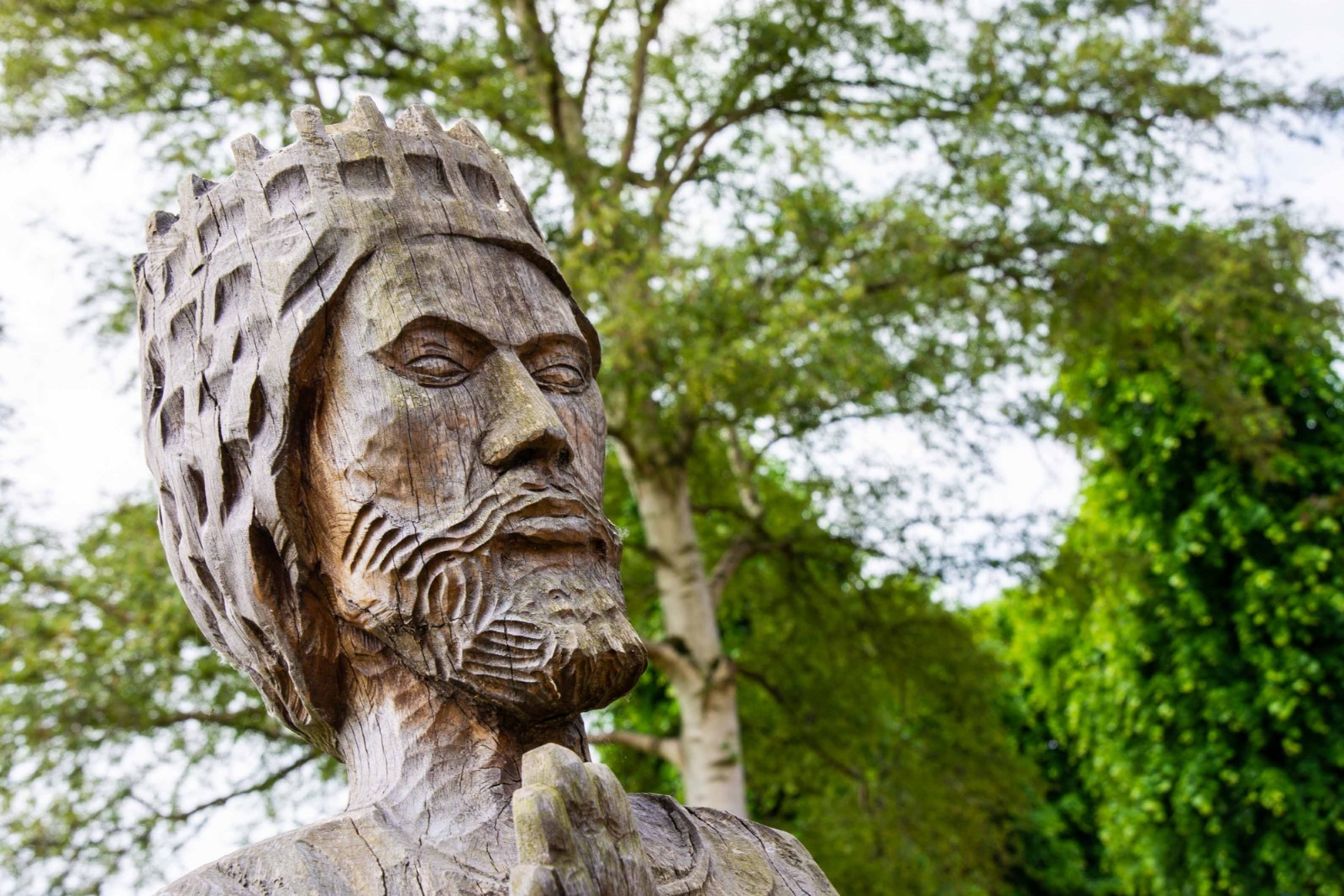Did you celebrate Valentine’s Day?

Valentine’s Day has become a significant cultural and commercial celebration of romance and love. In the United Kingdom an estimated £1.3 billion is spent annually on cards, flowers, chocolates and other gifts with an estimated 25 million cards being sent.
Around the rest of the world too, chocolates, flowers and gifts are exchanged between loved ones, all in the name of St. Valentine. But the history of Valentine’s Day and the story of its patron saint is shrouded in mystery.
We know that February has long been celebrated as a month of romance, and that St. Valentine’s Day, as we know it today, contains vestiges of both Christian and ancient Roman tradition. But who was St. Valentine, and how did his name become associated with love?
The Roman Catholic Church recognise at least 3 different saints named Valentine or Valentinus. All are candidates to be the St. Valentine! Perhaps the strongest candidate is a priest who served during the third century in Rome. Legend has it that, when Emperor Claudius II decided that single men made better soldiers than those with wives and families, he outlawed marriage for young men. Valentine, realising the injustice of the decree, defied Claudius and continued to perform marriages for young lovers in secret. When Valentine’s actions were discovered, Claudius ordered that he be put to death.
While some believe that Valentine’s Day is celebrated in the middle of February to commemorate the anniversary of Valentine’s death or burial—which probably occurred around A.D. 270—others claim that the Christian church may have decided to place the St. Valentine’s feast day in the middle of February in an effort to “Christianise” the pagan celebration Lupercalia. Celebrated at the ides of February, or February 15th, Lupercalia was a fertility festival dedicated to Faunus, the Roman god of agriculture, as well as to the Roman founders Romulus and Remus.
The Feast of Saint Valentine was formally established by Pope Gelasius in AD 496 to be celebrated on February 14th. The day only became associated with romantic love and passion in the 14th and 15th Centuries.
The Columbian Nobel Prize winning author Gabriel Garcia Marquez wrote a novel called Love in the Time of Cholera. Some of you may have read it or watched the 2007 film version. One of the main characters Dr Urbino is a medical doctor committed to the eradication of cholera. In Spanish 'cholera' also means passion. The title of Garcia Marquez’s novel is a pun: cholera as the disease, and cholera as passion, which raises the central question of the book: is love helped or hindered by extreme passion, are love and passion the same thing?
In ancient Greek there were at least 7 different words describing types of love. Romantic passionate love is just one of these, eros. Eros was named after the Greek god of fertility, and it represented the passion and desire. The Greeks didn’t always think of this as something positive, as we tend to today. In fact, eros was viewed as a dangerous, fiery, and irrational form of love that could take hold of you and possess you. Eros involved a loss of control that frightened the Greeks, which is odd, because losing control is precisely what many people now seek in a relationship. Don’t we hope to fall “madly” in love? And isn’t this exactly the sort of love that we are celebrating on Valentine’s Day.
The second Greek word for love is ludus. Ludus is playful flirtatious love, it is about superficial attraction and is fun but shallow and short lived.
The third variety of love recognised by the Greeks is philautia or self-love. This encompassed two distinct concepts. The first was an unhealthy variety of self-love associated with narcissism, where you become self-obsessed and focused on personal fame and fortune. The second healthier form of philautia is about feeling secure in yourself and consequently being able to show love to others and put them first or as Aristotle put it
“All friendly feelings for others are an extension of one’s feelings for himself”.
The fourth Greek word for love was philia. Philia is authentic friendship which the Greeks valued far more than eros. It is a deep comradeship that is forged through shared experience and is encouraging, kind and loyal. It is based on good will and wanting what is best for the other person and being prepared to make sacrifices for them.
Storge is unconditional familial love. It is protective and embodied in the love between parents and their children. Storge is sometimes thought of as one-way love. For instance, a mother loving her baby before the baby is aware enough to love her back.
The sixth form of love is pragma. Pragma is committed, compassionate love. Built on understanding and long-term best interests. It is about honouring and respecting each other accepting differences and learning to compromise. Over time eros can develop into pragma which is an everlasting love built on companionship. Pragma is perhaps best summarised by the famous passage from Louis De Bernier’s novel Captain Corelli’s Mandolin, which remains a popular reading at civil wedding ceremonies.
“Love is a temporary madness; it erupts like volcanoes and then subsides. And when it subsides you have to make a decision. You have to work out whether your roots have so entwined together that it is inconceivable that you should ever part.
Because this is what love is.
Love is not breathlessness, it is not excitement, it is not the promulgation of promises of eternal passion. That is just being in love, which any fool can do.
Love itself is what is left over when being in love has burned away, and this is both an art and a fortunate accident.
Those that truly love have roots that grow towards each other underground, and when all the pretty blossoms have fallen from their branches, they find that they are one tree and not two.”
The last form of love identified by the Greeks is agape. Agape is empathetic universal selfless love. This is the love that you extend to all people whether family members or distant strangers. Agape was later translated into caritas in Latin, which is the origin of our word charity. It is sometimes connected to altruism since it involves caring for others without expecting anything in return. Agape is the regarded as the highest form of love in Christianity and the same concept appears in other religious traditions for example, meta or universal loving kindness in Theravada Buddhism.
In the English language we have just one word, love, to describe these 7 different concepts. On Valentine’s Day we tend to focus on just one of these notions of love, passion or eros. In Love in the Time of Cholera Garcia Marquez questioned whether passion and love were really the same thing. Is romantic passion really what we mean when we talk of love? Rather than a celebration of eros perhaps Valentine’s Day should be an opportunity to reflect on what love really means and to focus our energies on love rather than passion. To focus on philia and storge rather than eros.
On our friends and families and those who really matter to us but whom we often take for granted, rather than on ourselves and a Hollywood notion of romance which is superficial and unrealistic. Even better perhaps Valentine’s Day could be about agape and a selfless unconditional love for all humankind that recognises our responsibility to create a better world around us.











